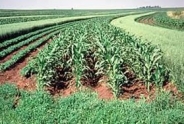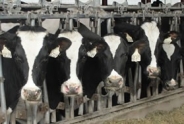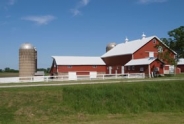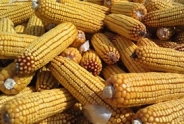Feeding Cull Pumpkins to Livestock
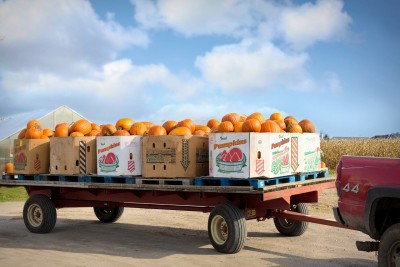
By Karla H. Jenkins, University of Nebraska-Lincoln Cow/Calf, Range Management, Panhandle Research and Extension Center
Cattle producers are always looking for ways to reduce feed costs for beef cattle production. One possibility is to use commodities that are available at salvage value. Purchasing commodities at salvage value can be a win/win situation for both the cattle producer and the owner of the commodity that is no longer worth its original value.
Pumpkins are a commodity having a limited window of optimal value. Depending on the year, many pumpkins may be left in the fields if not chosen for fall decorative purposes. Additionally, pumpkins harvested from the fields to be hauled to local markets may get broken or have some sort of blemish that makes the pumpkin less desirable for decorative purposes or human consumption. These pumpkins may be available for grazing or for inclusion in beef cattle rations.
Cattle find pumpkins palatable and do not seem to have much trouble consuming pumpkins left in the fields once the pumpkins have undergone some freezing and thawing. Pumpkins can also be lightly disked to facilitate consumption if they are still too firm for breaking up.
Pumpkins are high in moisture content (83-88%) and therefore do not provide a lot of dry matter per acre for cattle to consume. Grazing pumpkins in conjunction with a cornstalk residue field or a grass pasture or with supplemental hay may be necessary to ensure enough feed is available for the cattle. However, pumpkins make a good supplemental protein and energy source. The crude protein content tends to be between 14-17% on a dry matter basis and the in vitro digestibility (similar to total digestible nutrients or TDN) is 60-70%. Pumpkins can make a good supplemental feed for dry pregnant cows in the fall or can be included as a component of a growing ration for calves.
Regardless of the commodity being considered, producers need to evaluate the cost of the commodity per unit of protein or energy provided and include any transportation and labor costs associated with acquiring and feeding the commodity.
Utilizing alternative commodities no longer at peak market value can be a win for the cattle, a win for the cattle producer, and a win for the commodity owner.
Upcoming Events
Memoir Reading: Barn Gothic
December 4, 2025
Bath, NY
Barn Gothic is an elegy for family farmers and an intimate portrait of three generations laboring to be fathers and sons while their livelihood falls apart. Beautifully told with a farmer's restraint and a poet's grace, it is a story of personal loss amid corporate corruption and of finding a way forward when everything you know disappears.
NY Small Farms Summit 2025: Stronger Together
December 5, 2025
Alfred, NY
We hope you will join us on December 5th for the 2025 New York Small Farms Summit! This is an opportunity to meet other farmers and ag supporters, learn about research and education projects, and set priorities for future efforts to grow small farm success.
At the Allegany County site, we will focus on giving trees a chance and how trees build resiliency on small farms. Whether attracted to fruit, nuts, vegetables, fodder or shade, trees can be an integral part of a successful farming system. Join us as we explore the opportunities for resiliency that come from adding tree crops or managing wooded areas of your farm for agroforestry or silvopasture systems.
Crops, Cows & Critters - Southwest New York Dairy, Livestock & Field Crops Newsletter Sponsorship
December 19, 2025
Our two forms of publications feature research-based and timely information from our four specialists, listed to the right, along with local event notifications and Cornell University outreach. This information is provided to participants who range from dairy, livestock, and field crops producers to agricultural suppliers and consultants.
Weekly Email Update: Shared with 625+ households who have signed up with our program.
Monthly Paper Mailer: To reach our stakeholders and farmers who lack internet access, we send out a monthly mailer where your company's logo and contact information would be featured with a mailing list of 330+ households.
If you sponsor our weekly and monthly publications you reach approximately 955 households.
Visit our website to view our newsletters!
Announcements
No announcements at this time.

